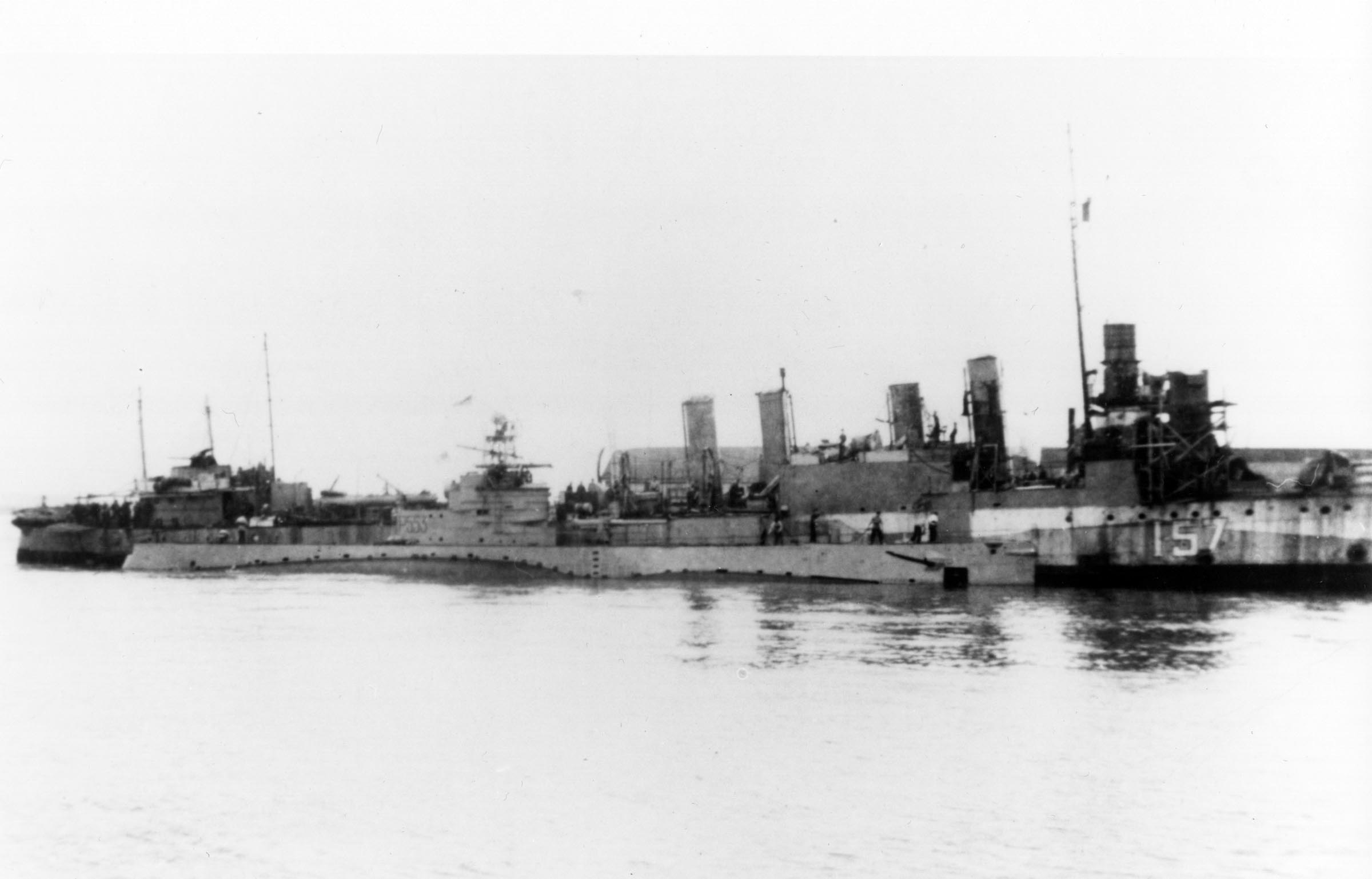HMCS NIAGARA (I57)

HMCS NIAGARA
The History of HMCS NIAGARA
Built for the USN, was originally named USS Thatcher. She was laid down on 8 June 1918 at Quincy, Massachusetts, by the Fore River Plant of the Bethlehem Shipbuilding Corporation; launched on 31 August 1918; and commissioned on 14 January 1919.
Decommissioned at San Diego on 7 June 1922.
Thatcher remained laid-up at San Diego until 1939. As war broke out in Europe on 1 September 1939, when German troops invaded Poland. Thatcher was recommissioned at San Diego on 18 December 1939.
Franklin D. Roosevelt issued an executive order authorizing the transfer of 50 "over age" destroyers to the British in return for 99-year leases on strategic base sites in the western hemisphere. Thatcher was accordingly withdrawn from the Atlantic Squadron and her operations with Destroyer Division 69 for transfer to the Royal Canadian Navy, which had been allocated six of the "50 ships that saved the world," as these vessels came to be known.
As such, Thatcher and her five sisters arrived at Halifax, Nova Scotia, on 20 September, the third group of the "flush deckers" transferred. Decommissioned on 24 September 1940, Thatcher was struck from the USN Navy list on 8 January 1941.
Renamed HMCS Niagara (I57) following the Canadian practice of naming destroyers after Canadian rivers (but with deference to the U.S. origin), after the Niagara River forming the border between New York and Ontario. Niagara departed Halifax on 30 November; proceeded eastward via St. John's, Newfoundland; and arrived in the British Isles on 11 December. Early in 1941, the destroyer was allocated to the 4th Escort Group, Western Approaches Command, and based at Greenock, Scotland. Subsequently transferred to the Newfoundland escort force, Niagara operated on convoy escort duties into the summer of 1941. While she was operating with this force, she took part in the capture of a German U-boat, U-570.
A Lockheed Hudson bomber, flying from Kaldarnes, 30 miles southeast of Reykjavik, Iceland, located U-570 running on the surface off the Icelandic coast on 27 August 1941. The "Hudson" attacked the U-boat with depth charges, damaging the enemy craft so severely that she could not submerge. Soon, some of the German crew appeared on deck displaying a large white cloth, possibly a bed sheet, indicating that they had surrendered. Patently unable to capture the submarine herself, the Hudson radioed for help.
Niagara sped to the scene and arrived at 08:20 on 28 August 1941. Rough weather initially hampered the operation but eventually, by 18:00, Niagara had placed a prize crew aboard the submarine and had taken U-570 in tow. During the operation, she also took the 43-man crew of the enemy craft on board. Towed to Iceland, the U-boat eventually served in the Royal Navy as HMS Graph.
In January 1942, Niagara escorted the tempest-battered Danish merchantman Triton into Belfast, Northern Ireland, after the freighter had been severely mauled in a storm at sea. In March the destroyer rescued the survivors from the American merchantman SS Independence Hall, which had run aground off Sable Island, Nova Scotia, and had broken in half. The next month, she picked up two boatloads of survivors from the sunken steamer SS Rio Blanco, which had been torpedoed by U-160 on 1 April 1942, 40 miles east of Cape Hatteras, North Carolina.
The destroyer subsequently underwent boiler repairs at Pictou from May to August 1942 before resuming coastwise convoy operations between Halifax and New York and escort duty in the western Atlantic. Another refit at Pictou came in June and October 1943, before she continued her coastwise convoy escort missions through 1944.
Niagara became a torpedo-firing ship - first at Halifax and later at St. John, New Brunswick - from the spring of 1945 until the end of World War II in mid-August 1945, training torpedomen. Decommissioned on 15 September 1945, Niagara was turned over to the War Assets Corporation on 27 May 1946 and ultimately broken up for scrap soon thereafter.
HMCS NIAGARA Statistical Data
- Pendant: I57
- Type: Destroyer
- Class: TOWN
- Displacement: 1069 tonnes
- Length: 314.3 ft
- Width: 30.5 ft
- Draught: 8.5 ft
- Speed: 28 kts
- Compliment: 10 Officers and 143 Crew
- Arms: 4-4", 12-21" Torpedo Tubes (4 x III)
- Builder: Bethlehem Shipbuilding Corp. Ltd.. Quincy, Mass.
- Keel Laid: 08-Jun-18
- Date Launched: 31-Aug-18
- Date Commissioned: 24-Sep-40
- Paid off: 15-Sep-45
Remarks
Ex USS THATCHER
